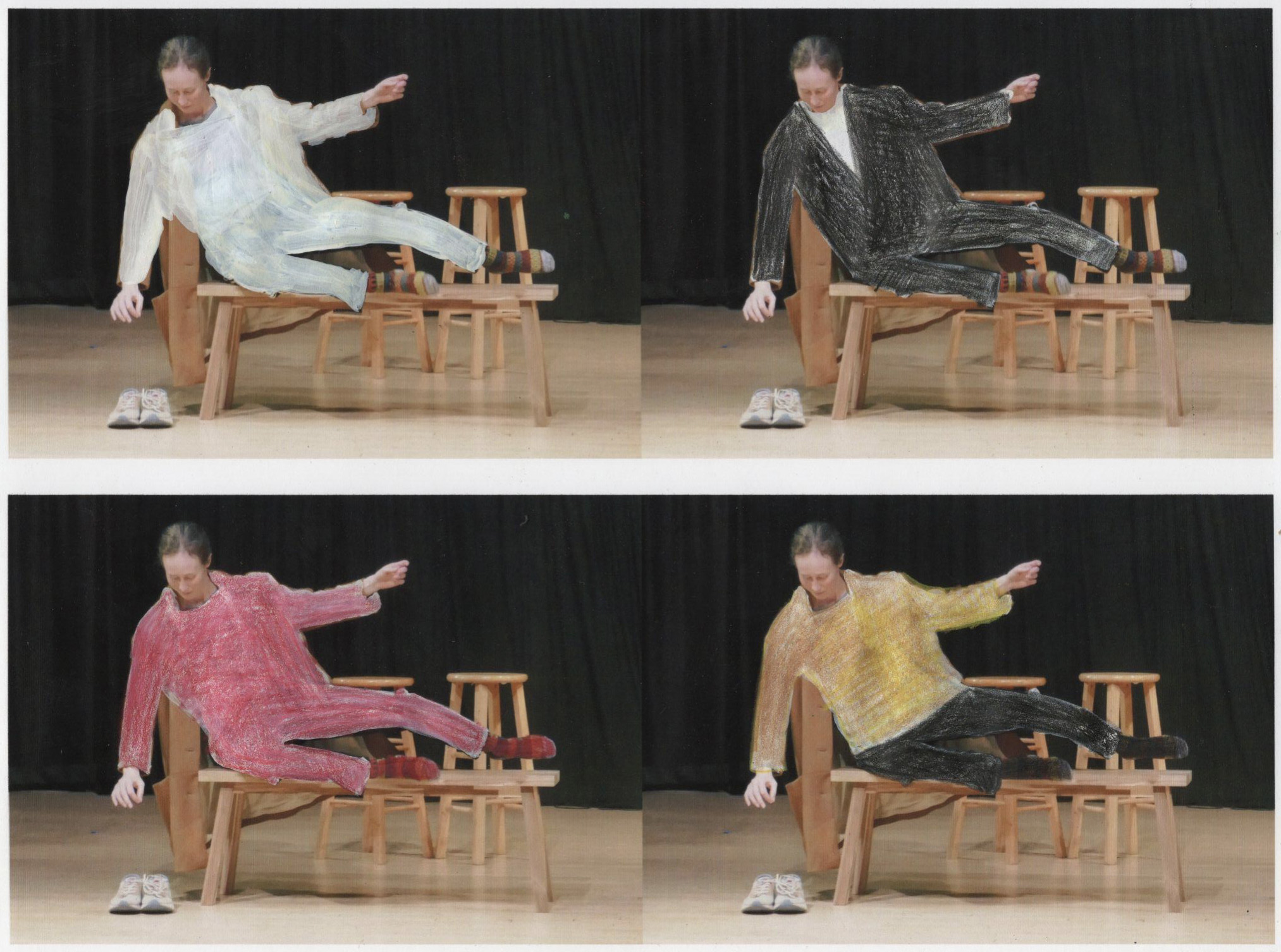On Character
Dear friends and supporters,
I received an email on November 11th, 2023 from writer, skateboarder, and friend Kyle Beachy. After an extensive and intricately reasoned preamble that included extracts from Anne Carson and Aristotle in considering complexities of collaboration, Kyle formulated a question.
“Matthew, what does character mean to your dramaturgy?”
I immediately thought of four avenues into the concept of character as one might understand it manifesting in performance, distinguishing practices of self-presentation from techniques of what we commonly call acting. In those last weeks of 2023, I could not find the time to compose the considered response that the question warranted. Among other obligations, the final newsletter of the year kept me occupied. Thanks once again to all of you who donated after receiving that appeal.
Now as winter reluctantly releases its grip and spring struggles for a degree of stability, I find myself returning to one of those avenues into character. The other three will have to wait. I will say about the word “avenue” as a means of definition that we might begin by thinking of character as an emergent concept: more direction than destination, an activity or activation, always approaching but never arriving. The first approach, then, addresses the question with another question, “What are you wearing?”
Perhaps this considers character indirectly, by asking the related questions, “How does character manifest? How does anyone perceive it?” Bounded by the specific concerns of any performance we might also ask, “Why does anyone perceive it?” My mind returns to certain passages in The Street Scene—A Basic Model for an Epic Theatre by Bertolt Brecht. This 1938 essay by the infamous playwright, poet, essayist, and director, comes to me by way of John Willett’s translation from the original German. In it, Brecht invented a case study for his style of theater. A vehicle has collided with a pedestrian on a city street. A crowd gathers seeking information. A sole witness testifies in the form of a demonstration of the event. This is Brecht’s ideal measure of performance. He writes, “To the street demonstrator the character of the man being demonstrated remains a quantity that need not be completely defined.” He argues for the necessity of narrowing the theatrical elements to those relevant to the demonstration. I come to my way of understanding character through wardrobe because of the following passage.
Our demonstrator may under given circumstances put on the driver’s cap—for instance if he wants to show that he was drunk: (he had it on crooked)—but he can only do so conditionally, under these circumstances […]. However, where there is a demonstration by several demonstrators […] we can have costume so that the various characters can be distinguished. This again is only a limited use of costume. There must be no question of creating an illusion that the demonstrators really are these characters.
As I write this we rehearse the final preparations for our two performances of Mina Loy’s prose work Crystal Pantomime, at The Arts Club of Chicago May 9th and Jane Addams Hull-House Museum May 16th. We consider this project an extension of the exhibition at the Arts Club of this neglected artist’s visual work. This performance includes four readers — Leila Ashrafi, Daniel Borzutzky, Nakiyah Jordan, and Jenny Polus, and one dancer —Elise Cowin. Artist Diane Simpson is designing and constructing an oversized lamp sculpture for center stage, and artist Max Guy is contributing concepts for stage objects and clothing. In response to the question of credit, Max replied that he has always been partial to the word “wardrobe.” We need to know what these five performers will wear, and why. Lin Hixson, the director, stated her one stipulation, “I don’t want them to look like characters.”
What does this statement from the director suggest? That they appear as versions of themselves with certain aspects amplified? As individual team members? What does the performance require? In the collaborative approach, we pose those questions to the artist overseeing wardrobe. Max delivered possibilities in the form of notes accompanied by rehearsal images duplicated and hand-colored for visualization.
Elise, Dancer
The dancer’s many movements feel like she is floating. She has many triangular and vertical moves that would benefit from something more fitted but still relaxed. Here are some palette ideas.
Please consider a full suit from Muji unless Elise has her own. These are mobile and comfortable.
I also suggest perhaps tailoring some sort of fringe onto whatever outfit, so that the arm and leg movements are made a bit more dramatic, but this isn’t necessary.

The concept of wardrobe, if considered as an end in itself rather than as only a means, affirms the capability of constructing oneself from the outside. It seems an appropriate starting point for staging a text by Mina Loy, credited, as a young designer of millinery and clothing, with “introducing to Paris the uncorseted profiles for women” in 1904. Maybe I’m simply wearing Brecht as a form of drag when I suggest that character may operate as a function of the exterior, and that the exterior operates as an avenue to interior, to those less material and less visible elements, altering them, tempering them, shifting their center to the needs of the performance. Performance activates the surface. It facilitates a dance between the visible and the unseen. As Mina Loy wrote in Crystal Pantomime, “This dance will be enchanting.”
Crystal Pantomime
Thursday, May 9, 2024
6:00 p.m.
The Arts Club of Chicago
201 E Ontario St, Chicago, IL 60611
Tickets
Thursday, May 16
6:00 p.m.
The Jane Addams Hull-House Museum, dining hall
800 S Halsted St, Chicago, IL 60607
Tickets